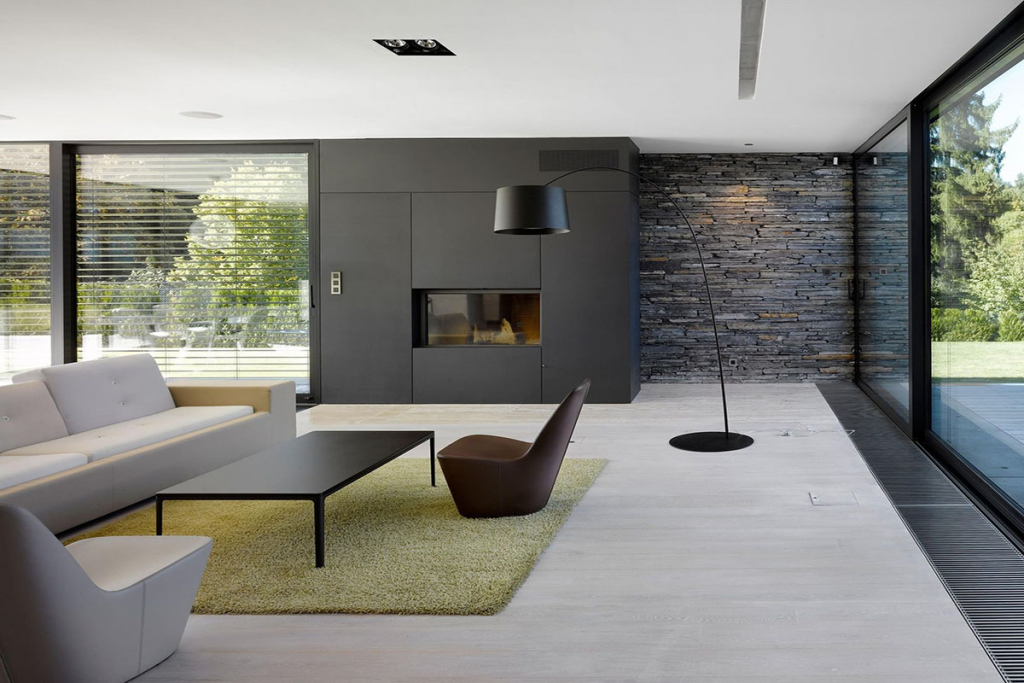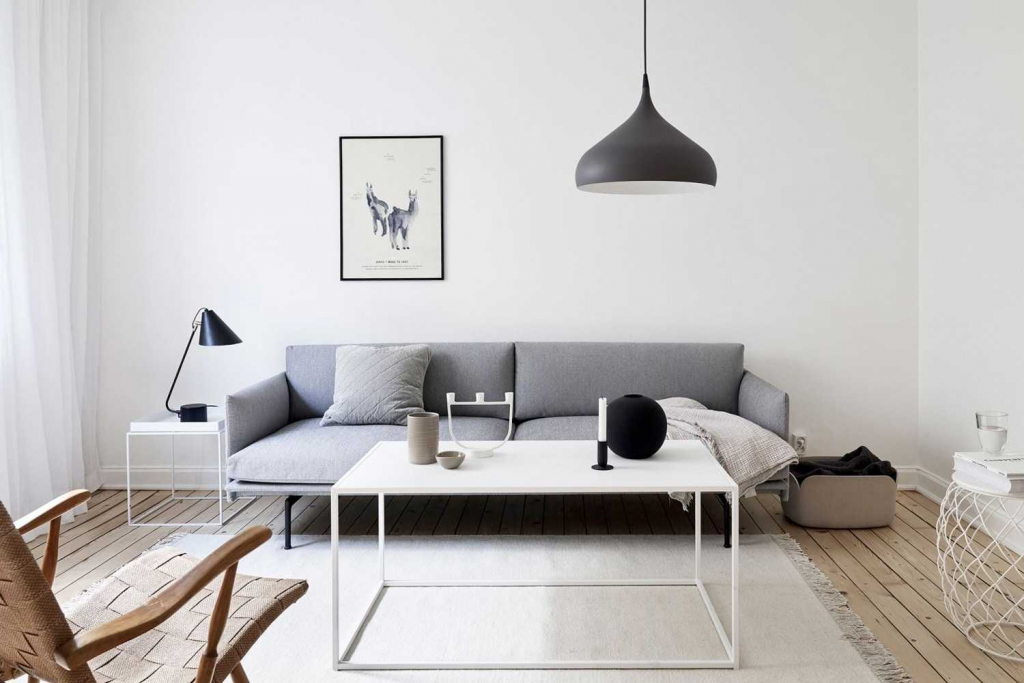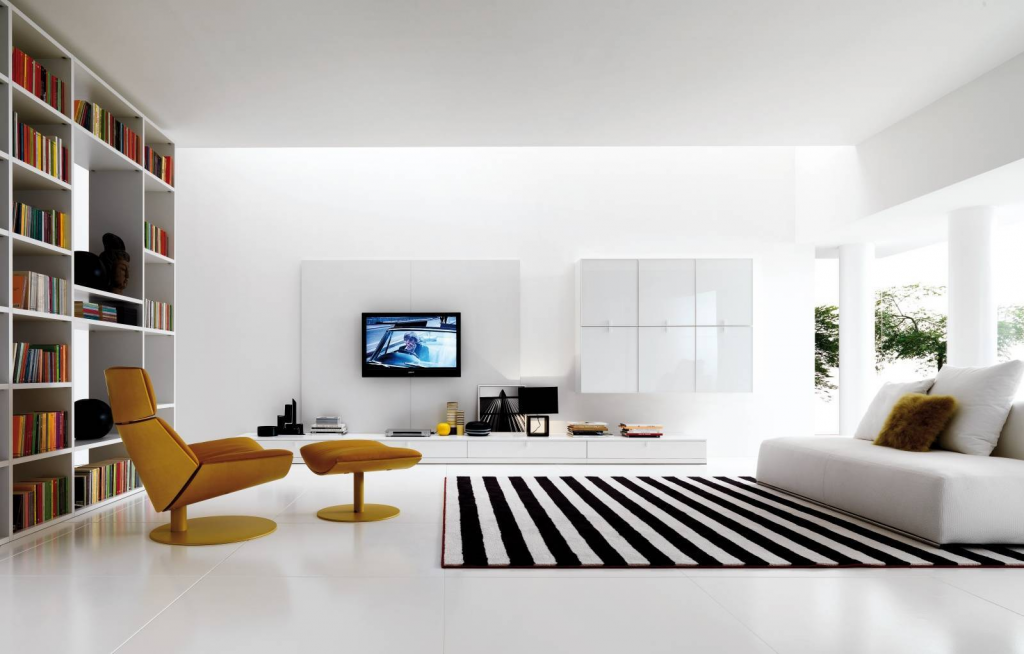Have you ever wondered why minimalist homes exude a serene charm and tranquil vibes? The answer lies in the simplicity and intentionality of minimalist styles. In this article, we will delve deep into the world of minimalist interiors, showcasing how less can indeed be more. From interior designs that prioritize space and light to minimalist decor that underscores clean lines and functionality, this decorating style transforms living spaces into havens of peace. Whether you’re looking to revamp your living rooms or create a restful minimalist bedroom, embracing modern minimalism brings a timeless aesthetic to your home.
The Core Principles of Minimalist Home Design
The minimalist approach to home decor revolves around a few key principles that promote simplicity and order. The famous adage “less is more” isn’t just a catchphrase; it’s the cornerstone of minimalist living. Every item in a minimalist home should be selected with care and serve a purpose. Minimalist homes are not just about stripping away excess but about enhancing the quality of living rooms and other spaces with thoughtful design choices.
Functionality over form is another vital principle. While minimalist styles are visually appealing, they also ensure that every piece of furniture in minimalist bedrooms and office spaces serves a practical function. This is even more important for smaller spaces, where every inch counts.
Moreover, a minimalist decorating scheme thrives on uncluttered spaces. This does not mean that homes should feel barren or cold; instead, selecting a few meaningful decor pieces can help create focal points that draw the eye without creating visual noise.

How to Achieve a Minimalist Home
Your journey to a minimalist home begins by letting go of non-essentials and decluttering your spaces. Decluttering is an ongoing process in minimalist homes and is as much about mindset as it is about physically removing items.
A neutral color palette plays a crucial role in minimalist interiors. By selecting timeless hues, you will make a space that feels more open and inviting. Interior designers often recommend incorporating natural light as much as possible to complement these color choices and make rooms feel larger.
When it comes to furniture, the minimalist aesthetic means choosing pieces that are functional and have clean lines. A good idea for living rooms and minimalist bedrooms is to invest in furniture that can be used for various purposes or can be easily stored away when not in use.
Creating a Cohesive Minimalist Home
Maintaining a consistent theme is crucial for a minimalist home. A coherent design not only looks great but feels good too, creating a sense of harmony throughout the house. Rooms like home offices and living rooms can maintain a minimalist decorating theme while still reflecting personal style.
Blending different rooms into a seamless minimalist design often involves repeating similar colors, materials, and textures throughout the home. This could also mean that some of the furniture pieces might have duplicative functions in various rooms, reflecting a unified decorating style across different spaces.
Natural light not only brings life to minimalist decor but also helps create a more open space. Large windows and open areas that allow for light to flow freely between rooms will work wonders in achieving a minimalist feel that also feels warm and welcoming.
Overcoming Common Challenges in Minimalist Design
One of the biggest hurdles in adopting minimalist styles could be dealing with sentimental items. A smart way to address this is by selecting a few cherished keepsakes to feature in your space, perhaps in a dedicated display or a transformed function.
Another challenge lies in adapting to minimalist living with family or roommates who might not share the same enthusiasm for a clutter-free environment. Communicating the benefits and finding compromise on storage spaces can help in these situations.
Finding the right balance can also be tricky. Warm colors, natural textures, and personal accents can prevent a minimalist home from feeling too stark or clinical. Embracing warmer minimalism with textiles and wood elements will give a cozier feel to the home.

Bringing Functional Beauty and Simplicity into Focus
Below is a table of essential items to introduce into living rooms for a minimalist touch:
| # | Living Room Essentials | Function & Use |
|---|---|---|
| 1 | Minimalist Sofa | Clean lines, simple shape, and functional seating |
| 2 | Coffee Table | Simplest form, serves as a focal point |
| 3 | Wall Art | Accents wall decor with a statement piece |
| 4 | Natural Rug | Adds texture and warmth underfoot |
| 5 | Functional Lighting | Provides ample illumination with modern fixtures |
Now, let’s consider two numbered lists that outline steps to get started with minimalist design and tips for maintaining it:
- Getting Started with Minimalist Design
- Identify and remove unnecessary clutter from your house.
- Choose a neutral color palette for walls and major pieces.
- Invest in quality furniture with simple lines and dual purposes.
- Incorporate open shelving to display minimal decor pieces.
- Allow for plenty of natural light to enter the space.
- Tips for Maintaining Minimalist Design
- Regularly declutter and re-evaluate items for their necessity and joy.
- Stick to a one-in-one-out policy for new things.
- Avoid impulse purchases by focusing more on need than want.
- Keep surfaces clean and free of items that don’t serve a specific function.
- Choose decor pieces intentionally, opting for ones that have a story or personal significance.
Conclusion
In conclusion, minimalist home style is not just an interior design trend; it’s a way of living that highlights the essentials. By focusing on space, light, and the beauty of simplicity, minimalist homes can bring a sense of order and tranquility to our often hectic lives. Modern minimalism in home decor is more than white walls and sparse furnishings; it’s about creating environments that celebrate the purity of form, function, and a connection to our personal style. Whether you’re embarking on a full-on minimalist renovation or incorporating elements bit by bit, remember that a minimalist lifestyle is a growing practice of mindfulness, refinement, and intentionality that can help anyone’s space—and life—feel more purposeful and serene.

FAQs:
Q1: How do I start transitioning to a minimalist home without feeling overwhelmed?
A1: Begin with one room at a time, decluttering and choosing a few pieces that truly resonate with you. Transition slowly and with intention, not rushing the process.
Q2: How do I handle items with sentimental value when creating a minimalist home?
A2: Keep only those sentimental items that truly matter to you. Display them respectfully or find a way to repurpose them. Take photographs of items before letting them go if necessary.
Q3: Can a home with children still be minimalist?
A3: Yes, with careful planning and the creation of designated spaces for toys and other items that children might need. Consistent cleanup routines and minimal personal belongings will help maintain a minimalist space.
Q4: Is it expensive to achieve a minimalist home style?
A4: Not necessarily. Minimalist homes often save money in the long term due to purchasing fewer, but better-quality items, and by reducing the temptation to buy unnecessary decor.
Q5: How do I maintain a minimalist home without it feeling cold or impersonal?
A5: Integrate elements such as warm neutral colors, natural textures, comfortable textiles, and meaningful personal items that create a warm, inviting atmosphere.



